Blue Sky Studios’ Head of Story Adam Cootes reflects on the roles that determination, hard work and a touch of random fate played in his trans-Atlantic career journey.
Growing up in the north of England in the 1970s and 80s, before the age of the internet, cell phones or social media, it was almost impossible to conceive of a career in animation being anything other than an unattainable dream. Despite the fact that I was always drawing as a kid, or that I went through my entire school life being told by every teacher and adult I knew that I was talented, it never seemed like something I could do “for real.” And sure enough, when I graduated from high school at 16, no-one had the faintest idea how to go about getting a job in animation.
I had no other option than to simply forget about it and go find a “normal” job like everyone else. Over the course of the next eight years, the nightclub business took me all over the UK, and I worked in all kinds of venues in almost every capacity; barman, bar manager, club manager, security, etc. Throughout this entire time, not once had I so much as picked up a pencil to draw. It was as though the need to do so had died the minute I left school. So, it was almost a surprise to me when the notion of doing something artistic with my life once again occurred to me completely out of the blue.
I was living in London. I was 28 or 29 years old, and although I was caught by the idea, I still had absolutely no idea how to make the leap into what remained, from my perspective, a completely out of reach industry. Yet, for some reason, (and I’ve never been able to explain it) I felt almost compelled to try. Without any real plan, I contacted my sister and asked if she would let me stay with her for a while until I figured out what I wanted to do. Thankfully, she agreed, and this would turn out to be very fortuitous for me even though neither of us knew it at the time.
My plan, I’d decided, was to try my hand at comic books. I got myself a part-time job as a barista in a local bar, and spent all my free time putting together a portfolio of comic-book style artwork. I found the contact info for the editor of 2000 AD (which, as any fan of Judge Dredd will know, is a long-running British-based comic) and I sent in some samples. The editor back then was a guy called Andy Diggle, who has since gone on to do great things with both Marvel and DC comics, and I think he saw enough promise in my samples to allow me to try out for one of the strips 2000 AD was running at the time.
Now, here’s where I feel fate stepped in. During the time I had been building my portfolio I had obviously been getting to know people. My sister, of course, had introduced me to her circle of friends, and through this group I was introduced, almost by accident, to a guy called Shaun Magher. Shaun, would you believe, owned and operated a small, independent animation studio. An animation studio! In Stoke-on-Trent!! And not only that, the studio was doing so well that he was desperately in need of some help. I told him about the work I was doing for 2000 AD, and he asked me if I’d ever done a storyboard. Working off the maxim “fake it ’til you make it,” I lied to his face and told him I had.
The next thing you know, I’m working at his studio storyboarding for a children’s TV show. The learning curve was steep, for sure, but somehow I made it work, and I was asked to do another. And another. The original plan of doing comics was a distant memory. This was TV!! This was WAY more exciting!
The studio was taking on multiple jobs at a time. Shaun was an established traditional animator with 15 years’ experience at this point, and although he employed a couple of animation assistants already, the work was piling up. In addition to the storyboarding, I had been helping out with layouts and background paintings and the like already, but he was in real need of more help on the animation front. So, sensing an opportunity one day, I just offered. Luckily for me, he was willing to give me a try, and so I began helping out with the clean up. I did that a few times, then I began to help out with in-betweening. All the while, I’d watch how Shaun did things, studying how he broke down scenes and blocked out his shots. Gradually I progressed to the point where Shaun could do just the main key drawings and I could confidently fill in the rest, and eventually, after a year or two, I was keyframing animation myself.
The main thing I remember about this period is that, despite the amount of work we were doing and despite all the things I had to learn, none of it felt like an effort. Quite the contrary – it was thrilling. It was the first time in my life that I actually felt like I was doing what I was supposed to be doing.
The next big challenge came with the inevitable shift into CG. It was a challenge for the studio, and it was definitely a challenge for me. As I said at the beginning, I grew up in a world before computers, and until I started work at Shaun’s studio, I’d never even used a mouse.
I had gotten to grips with Photoshop pretty quickly, but Maya was a much more daunting prospect. Shaun himself had only a basic knowledge of the software, and the other 2D animators in-house were showing little interest in learning it, so it fell to me of all people to dig in and learn it. I don’t mind admitting that this chapter in my history as an animator was probably one of the most stressful, because it wasn’t just the animation tools I had to learn. It was everything; modelling, surfacing, rigging, lighting and rendering… The whole shebang! And I only had the textbook manuals to learn from, which for a luddite like myself was an absolute nightmare! I distinctly remember weeks of sleepless nights, and when I did sleep I would dream of vertex points and NURBs curves.
It was definitely one of the hardest things I’ve ever done. The learning curve was immense, as was the pressure, because, once again, I was having to learn on the job. But the effort paid off and, over time, we got there. The studio evolved and was able to successfully branch out into the CG market, and I came away with a very thorough understanding of the entire CG pipeline, something that would benefit me greatly as I entered the next chapter of my journey and has continued to benefit me to this day.
The next chapter I speak of was Aardman Animations. As much as I had loved my time at Shaun’s studio, I felt like it had taken me as far as I could go, and if I was to continue to develop I needed to move on. Shaun had always been a great mentor to me, and like all great mentors he, too, knew it was time. It was he who actually introduced me to a friend of his who was a producer at Aardman, and she invited me down to the studios in Bristol to try out.
It’s a funny thing how, sometimes, getting what you wish for can be such a nerve-wracking experience. Right up to this point I had felt confident in my abilities, proud of what I’d learned, and completely ready to step up to the next level. Now, however, faced with the opportunity to do that, I was suddenly overcome with anxiety and self doubt. I was, I realized much later on, afraid to fail.
These are the moments in our lives, I think, where the choices we make have the biggest influence on whether or not we end up where we want to be. The paths we choose at these crossroads will ultimately define our careers. Opportunities tend to come along before you are actually ready, or at least feel ready, to take them, so you have to be open to them and willing to take a leap of faith whenever they present themselves. Fear and self doubt are the biggest obstacles to that, and as artists I think that most of us are particularly susceptible to those traits.
Don’t let them hold you back.
I’m so glad I didn’t, because I went on to spend the best part of a decade working at Aardman.
I had a fantastic time there, learning new skills as a professional and developing as an artist. My experience of both 2D animation and CG allowed me to be involved with all aspects of production at the studio, and although I was employed primarily as an animator I would often be asked to pitch in with character design or layout, etc. And it was my knowledge of the full CG pipeline that ultimately led to my role as lead on The Pearce Sisters, a short film created and directed by Aardman director (and my good friend) Luis Cook, which went on to win over 35 international awards including a BAFTA.
It was around this time that the next opportunity presented itself. Aardman had apparently made a deal with Sony Pictures. We were going to make three feature films, and it was rumored that at least one of them was going to be CG. This was huge! Making a feature had long since been the next “to do” on my wish list, but even at Aardman this had felt like an impossibly big step. Another unreachable goal.
The studio had made a handful of features, of course, most notably the Oscar-winning Chicken Run, but they were famously a stop-frame outfit when it came to their movies and I didn’t do stop-frame animation. Also, the actual industry of feature animation only really exists in America. That’s just the bottom line reality of the situation. In Europe it’s a constant struggle to get feature projects off the ground, and the few opportunities that do exist are built on shifting sand.
So, this was a truly exciting prospect for me. I had no idea how any of it was going to work, but I knew I wanted to be a part of it in any way I could. I was confident that I would at least be considered for an animation role when the time came, but what actually happened came as a complete curve ball.
The movie that was going to be done using CG was Arthur Christmas, and the pre-production was to be done in the UK, at Aardman. Sony sent over a group of their own people to help set up the pipe and begin visual development, and among these were two people who would become not only great friends, but two of the biggest influences of my professional career. The first was Donnie Long, who was going to be Head of Story on the project, and the second was Kris Pearn.
It was Donnie that actually threw the curve-ball. Whilst the production was attempting to crew up for story, Donnie casually asked me one day why I was waiting until animation production started. We’d talked about my early days in the business as we were getting to know one another, so he knew I’d started out as a board artist. Why not join the story crew? It seems obvious now, but at the time the question hit me like a bolt from the blue. It hadn’t even occurred to me as an option, but there it was. Not only was it a chance to get on the movie, but it was a chance to get on the movie right now!!
So, once again I took a chance, not really knowing what I was doing or what was expected. It had been over a decade since I’d boarded anything, and it became immediately apparent that boarding for a feature was going to be a completely different ball game. Fortunately, I had Kris sitting right next to me and, in much the same way I had done with Shaun back in the day, I watched how he worked, studying his techniques and, more importantly, his workflow.
Anyone that has worked with Kris will know what an absolute beast he is when it comes to cranking out a sequence, and it was a masterclass every single day. I learned so much from him it’s impossible to quantify, and I am eternally grateful to both he and Donnie for what they did for me back then. Donnie for throwing me the curve-ball in the first place, because it set me off on the path that has led me to where I am today, and Kris for showing me what it means to be a professional story artist at the top of his game.
The move to the U.S. was the last box to be checked. For me, this happened as Arthur Christmas moved into animation production. I was incredibly fortunate to be a part of the animation team from Aardman relocated to California to see production through to the finish. And, once again, the reality of finally getting something that had previously seemed unattainable was both exhilarating and terrifying in equal measure.
The entire immigration process is daunting, to say the least, and I’ve had to do it twice over now, so I know what I’m talking about. Believe me when I say it’s not for the faint hearted. Starting a new life in a new country is also harder than you might think. My wife and I both made the mistake of thinking that America would be just like England. I mean, we speak the same language, right? Er..turns out we don’t. Almost everything that could be different was different, culturally and socially. Even starting work at Sony was a much more complicated experience than I’d anticipated, nothing at all like starting a new job in the UK. There was more paperwork to fill in on my first day at Sony than I think I’d seen in the rest of my life put together. Health care selections: HMO or PMO? 401K… What?? What the **** is a 401K??!
In the end, though, it was the best move we ever made. We both fell in love with California, and we made some great friends. I also got to realize what a small, close knit industry the animation business really is, and how working hard, being professional and treating people the way you wish to be treated in return is the very best way to create a good reputation for yourself. I got my head down and worked really hard on Arthur, and I truly believe this is what led to me being offered a position at DreamWorks a year or so later. I spent three years there, doing the job, learning, collaborating and, most of all, continuing to develop as an artist.
Today, I’m over on the east coast working at Blue Sky Studios. Yet again, this was a move prompted by an opportunity that came along unexpectedly. My wife and I hadn’t been considering leaving LA, but as I said earlier, opportunities have a tendency to present themselves before you’re ready. If you’re willing to take them, good things can happen. Unattainable dreams really can come true.
Take it from me. I know.
Adam Cootes is currently Head of Story at Blue Sky Studios. Prior to this, Adam worked at DreamWorks for a period of three years as a story artist, contributing to several studio projects including the recently released Captain Underpants: The First Epic Movie. He has also worked at Sony Pictures Imageworks on the Sony/Aardman collaborations Arthur Christmas and Pirates: Band of Misfits. Before his career in the U.S. began, Adam was a senior animator at Aardman Animation in the UK for the best part of a decade. During his tenure there, he was a lead role in the production of The Pearce Sisters, a short animated film that was the recipient of over 35 international awards including a BAFTA.
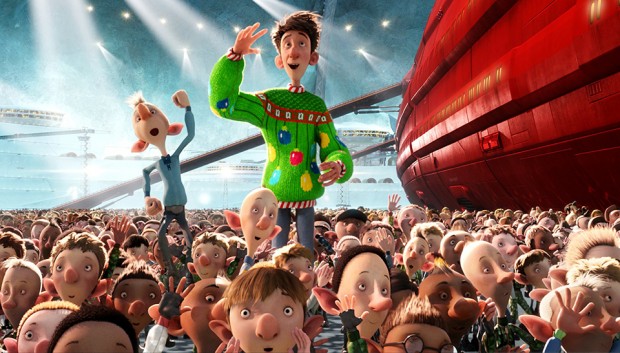
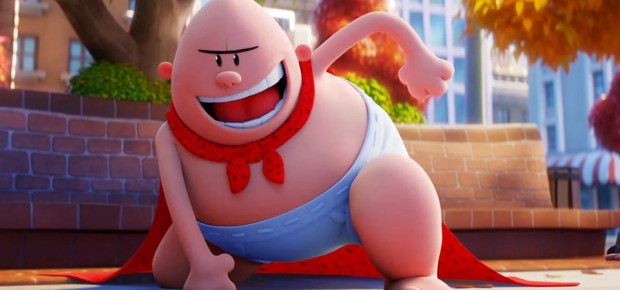
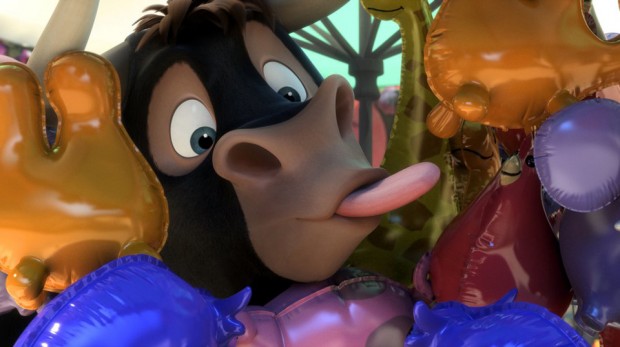
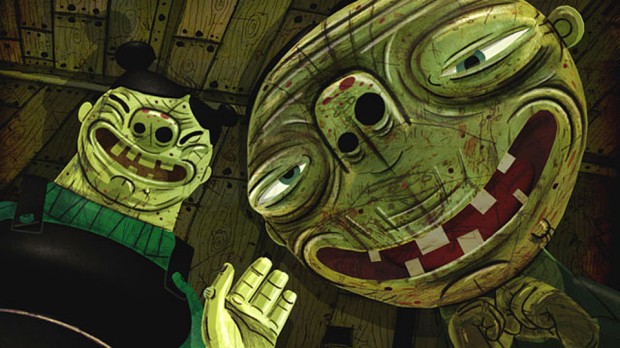




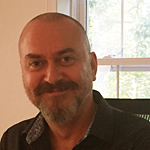


Great article! : )